George Fisher (died 1820) was an American pioneer, physician, and legislator.
Fisher settled in Kaskaskia, Indiana Territory in 1798 and practiced medicine. Fisher may have been from Virginia. He served in the Illinois Territorial Militia during the War of 1812. In 1805, Fisher served in the Indiana Territorial House of Representatives. In 1812 and 1816, he served in and was speaker of the Illinois Territorial House of Representatives, representing Randolph County, Illinois, where Kaskaskia is located. In 1818, Fisher served in the first Illinois Constitutional Convention. The Indiana Territory Governor William H. Harrison appointed Fisher sheriff of Randolph County in 1801. He died in 1820 in Randolph County, Illinois. [1] [2] [3] Fisher is buried on St. Leo's Road eight miles below Ruma in Randolph County. [4]

Randolph County is a county located in the U.S. state of Illinois. According to the 2020 census, it had a population of 30,163. Its county seat is Chester.

Kaskaskia is a village in Randolph County, Illinois. Having been inhabited by indigenous peoples, it was settled by France as part of the Illinois Country. It was named for the Kaskaskia people. Its population peaked at about 7,000 in the 18th century, when it was a regional center. During the American Revolutionary War, the town, which by then had become an administrative center for the British Province of Quebec, was taken by the Virginia militia during the Illinois campaign. It was designated as the county seat of Illinois County, Virginia, after which it became part of the Northwest Territory in 1787. Kaskaskia was later named as the capital of the United States' Illinois Territory, created on February 3, 1809. In 1818, when Illinois became the 21st U.S. state, the town briefly served as the state's first capital until 1819, when the capital was moved to more centrally located Vandalia.

The Northwest Territory, also known as the Old Northwest and formally known as the Territory Northwest of the River Ohio, was formed from unorganized western territory of the United States after the American Revolution. Established in 1787 by the Congress of the Confederation through the Northwest Ordinance, it was the nation's first post-colonial organized incorporated territory.
The Territory of Illinois was an organized incorporated territory of the United States that existed from March 1, 1809, until December 3, 1818, when the southern portion of the territory was admitted to the Union as the State of Illinois. Its capital was the former French village of Kaskaskia on the Mississippi River. The northern half of the territory, modern Wisconsin and parts of modern Minnesota and Michigan became part of the Territory of Michigan in 1818.

The Indiana Territory, officially the Territory of Indiana, was created by an organic act that President John Adams signed into law on May 7, 1800, to form an organized incorporated territory of the United States that existed from July 4, 1800, to December 11, 1816, when the remaining southeastern portion of the territory was admitted to the Union as the state of Indiana. The territory originally contained approximately 259,824 square miles (672,940 km2) of land, but its size was decreased when it was subdivided to create the Michigan Territory (1805) and the Illinois Territory (1809). The Indiana Territory was the first new territory created from lands of the Northwest Territory, which had been organized under the terms of the Northwest Ordinance of 1787. The territorial capital was the settlement around the old French fort of Vincennes on the Wabash River, until transferred to Corydon near the Ohio River in 1813.

Ninian Edwards was an American political figure who was prominent in Illinois. He served as the first and only governor of the Illinois Territory from 1809 to until the territory earned statehood in 1818. He was then one of the first two United States senators from the State of Illinois from 1818 to 1824, and the third Governor of Illinois from 1826 to 1830. In a time and place where personal coalitions were more influential than parties, Edwards led one of the two main factions in frontier Illinois politics.

Daniel Pope Cook was a politician, lawyer and newspaper publisher from the U.S. state of Illinois. An anti-slavery advocate, he was the state's first attorney general, and then became a congressman. He is the namesake of Cook County, Illinois.
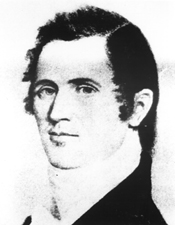
Elias Kent Kane was the first Illinois Secretary of State and a U.S. Senator from Illinois.
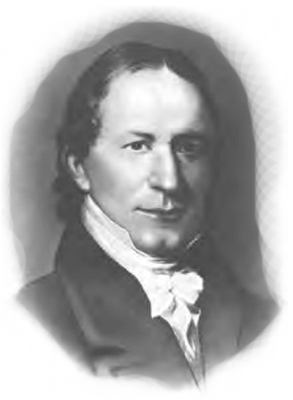
Shadrach Bond was a representative from the Illinois Territory to the United States Congress. In 1818, he was elected Governor of Illinois, becoming the new state's first chief executive. In an example of American politics during the Era of Good Feelings, Bond was elected to both positions without opposition.
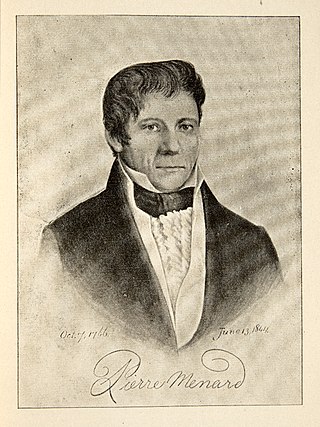
Pierre Menard was a Canadian-American fur trader and politician who was elected the first lieutenant Governor of Illinois in 1818.
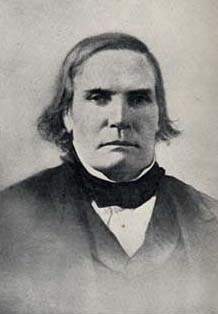
Jesse Burgess Thomas was an American lawyer, judge and politician who served as a delegate from the Indiana Territory to the tenth Congress and later served as president of the Constitutional Convention which led to Illinois being admitted to the Union. He became one of Illinois' first two Senators, and is best known as the author of the Missouri Compromise of 1820. After his retirement from the U.S. Senate in 1829 he lived the rest of his life in Ohio.

Benjamin Stephenson was the Congressional Delegate for the Illinois Territory from 1814 until 1816, and a delegate to the Constitutional Convention that made it possible for Illinois to become a state.

William Pickering was an English-born American politician who served as the fifth governor of Washington territory, from 1862 to 1866. He was a member of the Republican Party.
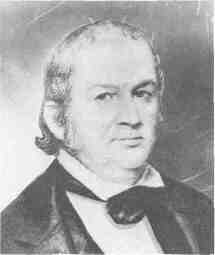
Nathaniel Pope was an American government leader in the early history of the State of Illinois. He served as the Secretary of the Illinois Territory, then as a Delegate to the United States House of Representatives from the Illinois Territory, and for over thirty years as the United States district judge for the United States District Court for the District of Illinois.
John Rice Jones was a Welsh-born, American politician, jurist, and military officer. He helped establish the territorial governments in Indiana, Illinois, and Missouri. John Rice Jones was the father of U.S. Senator George Wallace Jones from Iowa.
Raphael Widen was an Illinois pioneer and politician. He is thought to have been the first Swedish-American to reside in what would become the state of Illinois. He was first recorded in the state in 1814, when he was appointed a justice of the peace. Widen served four years in the Illinois House of Representatives and four years in the Illinois Senate.
Thomas Cox was an American pioneer, politician, and surveyor from what is now Kentucky. His family moved to the Indiana Territory, where Cox joined the territory militia. He was promoted to a lieutenant colonel and may have seen service in the War of 1812. After the war, he became a surveyor to help support his family. He also served in county politics until the state of Illinois was formed in 1818. Cox was elected to its 1st General Assembly as a state senator, serving for two years. He then worked as Register of the U.S. Land Office in Springfield, Illinois, but fell into debt after some poor land speculation deals.
The Illinois Intelligencer (1814–1832), was the first newspaper in Illinois. Founded by Kentucky native Matthew Duncan as the Illinois Herald in 1814, the printing offices were also used to print early territorial documents. In 1816, the operation was sold to Daniel Pope Cook, who re-titled the publication the Western Intelligencer. Under Robert Blackwell, Elijah C. Berry, and William C. Berry, the paper was issued until 1832.
Wickliffe Kitchell was an American politician and lawyer.

The Randolph County Courthouse is a government building in central Chester, the county seat of Randolph County, Illinois, United States. Built in 1972, it is the latest of several buildings to serve as the seat of government in Illinois' oldest county, and the second erected in Chester after the relocation of county government from Kaskaskia in 1847 after a devastating flood.